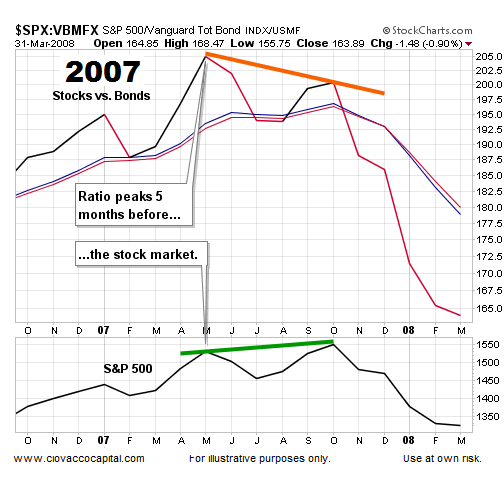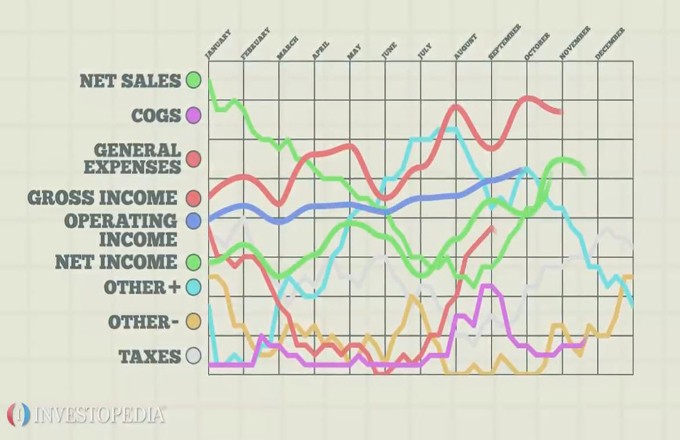How Key Stock Ratios Work
Post on: 16 Март, 2015 No Comment

O ne large component of fundamental analysis is reviewing key stock ratios to evaluate the companies profitability, liquidity, performance and value.
It should be noted however that any single ratio should not be used to determine whether or not its a good company to own. In my opinion, a combination of ratios should be used along with your own discretion as to whether or not its a good opportunity to own the company.
Price to Earnings (P/E)
The P/E or Price to Earnings ratio is perhaps the most common valuation tool used. It displays the ratio of the stock price relative to its earnings. The lower the ratio, the cheaper the stock. The one issue with the P/E ratio is that earnings can be manipulated by accounting tricks, so it shouldnt be used as the end all be all of determining value. As well, the P/E ratio range varies between sectors/indexes. For example, the small cap index will likely have a higher P/E ratio than the large cap index as the expected growth rate is higher.
Price to Earnings to Growth (PEG)
To improve the P/E ratio, Peter Lynch came up with the Price to Earnings to Growth ratio, or the PEG ratio. This ratio is simply the P/E ratio divided by the expected earnings growth of the stock. The lower the number, the more appealing the stock (according to Mr. Lynch). Growth rate can be taken from company forecasts (which I dont like), or simply taking the earnings per share (EPS) growth over the past 5.
Price to Book Value (P/B)
Book value is the net worth of the company. In other words, its the Assets minus the Liabilities. Book value is often compared to the price of the current stock which is simply the price per share divided by the book value per share. Value investors often look at book value gauge how much the company would be worth if they had to liquidate their assets. Companies with a P/B ratio of 1 means that the companys net worth or shareholders equity is equal to the current asking price of the stock in other words, possibly cheap!
Current Ratio
The current ratio is a solvency ratio and indicates the companies ability to cover liabilities due in the near future (12 months). The higher the ratio, the better off the company is able to pay their upcoming liabilities. However, too high of a current ratio could mean that the company is holding too much cash which is not being used to generate more profit. A ratio of 1 means that they have $1 of current assets for $1 of current liability. A common threshold for evaluation of a minimum current ratio of 2.
The formula is: current ratio = current assets/current liabilities.
Generally speaking, current assets are assets that are relatively liquid which means they can be converted to cash in a relatively short period of time. This can include cash, inventory, accounts receiveable.
Current liabilities is cash that is due to the paid back within a 6-12 month time frame. This can include, payroll, accounts payable, portions of long term debt and short term debt.

Like the other ratios, chances are you dont need to dig into the balance sheet to pull current assets/current liabilities, there are a lot of websites out there, like stockhouse.ca or msn money that display current ratio already calculated.
Quick ratio
There are some sectors that have huge inventory costs, but inventory on the balance sheet can be slow to move. The issue with this is that inventory is often counted as a current asset but can skew the current ratio if the inventory value relatively large.
To adjust for this, you can use the quick ratio which is simply: (Current Assets Inventory)/Current Liabilities. Many investors like to see the quick ratio to be 1 or greater.
Conclusions
What to take away from all this? Value investor guru Benjamin Graham would typically look for companies with a current ratio of 2.0 or greater, a Price/Earnings of 15 or less, Price/Book of 1.5 or less (among other criteria). Here is my article on Canadian Stock Screeners that can help you identify stocks with these ratios.
Do you use stock ratios when evaluating your investments?














